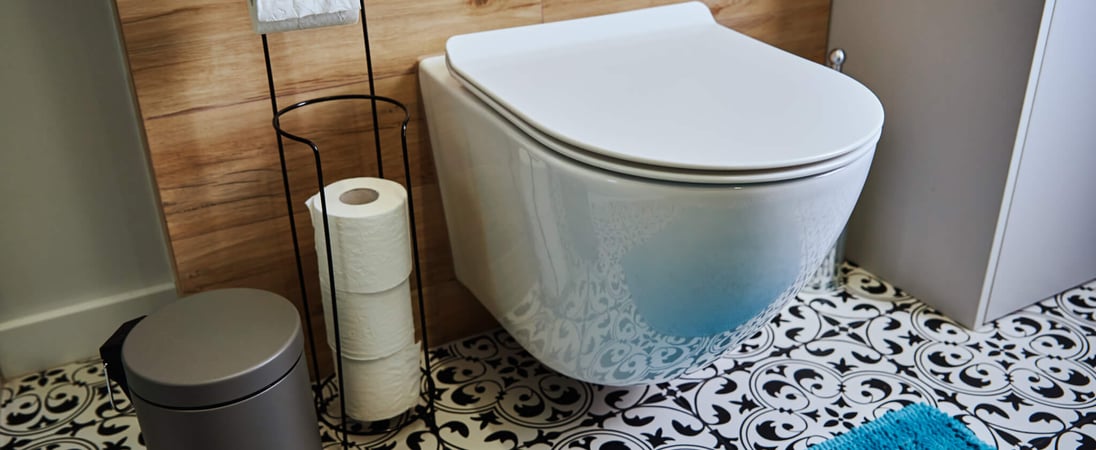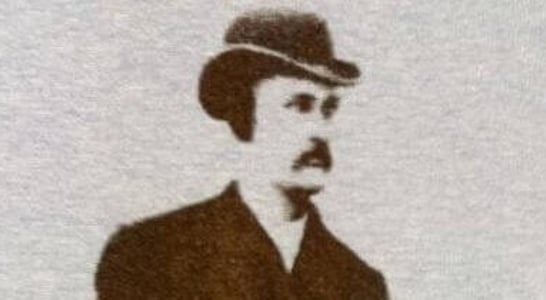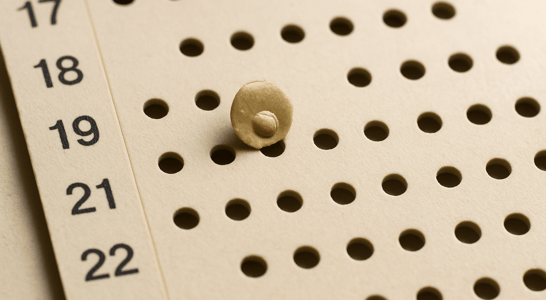
Thomas Crapper Day
Revolutionizing plumbing, an innovator's legacy transformed the way we handle necessities, leaving an enduring mark on sanitation.
Thomas Crapper Day is dedicated to the legendary plumber whose name is now synonymous with what’s arguably one of the most essential inventions in human history: the toilet. You might also affectionately call it the loo, porcelain throne, potty, or the can.
Whatever you call your toilet, Thomas Crapper Day honors the legacy of the English businessman and plumber who brought the modern flush toilet into our homes.
Without his innovations, we might still be headed out of doors to the outhouse every time nature calls.
How to Celebrate Thomas Crapper Day
Celebrating Thomas Crapper Day can be both educational and fun. Here are some ways to honor this day:
Learn About Sanitation History
The history of sanitation shows an interesting pathway from ancient innovations to modern conveniences. The evolution of toilets reflects human ingenuity and the ever-present need for cleanliness to have better health.
Looking into this history, one will see the various stages of development, from the chamber pots of medieval Europe to the first flushing toilet invented by Sir John Harington in the Elizabethan Era.
Thomas Crapper’s contributions in the 19th century were leveled up, transforming these early models into the more efficient and hygienic commodes we use today. Understanding this progress reveals both the importance of sanitation in human history and its impact on public health.
Visit Historical Toilets
The legacy of Thomas Crapper is still visible in London today. It takes the form of manhole covers and historical toilets throughout the city that bear his company’s name.
These relics are not mere relics of an earlier time – they are, indeed, symbols of a sanitary revolution. Visiting these sites offers a unique perspective on how far toilet technology has come.
The Crapper & Co. manhole covers remain scattered around London. They can help understand the extent of Crapper’s widespread influence in the city’s sanitation infrastructure.
Finally, some of his original toilets still exist inside historical buildings and museums, providing a tangible link to the past. Exploring these historical sites is a bit like a time capsule that offers a peek back into the Victorian era’s approach to sanitation and the ingenuity of Thomas Crapper.
Appreciate Modern Sanitation
Take a moment on Thomas Crapper Day to appreciate the modern toilet, a marvel of engineering and design that significantly improves our daily lives.
Today’s toilets are functional and water-efficient, thanks to advancements like dual-flush systems and low-flow designs.
The convenience and hygiene of modern toilets are something past generations could hardly have imagined.
They also play a key role in preventing the spread of diseases and maintaining public health. Reflecting on the luxury of having a clean and private bathroom space highlights the importance of ongoing efforts to improve sanitation worldwide.
It is sobering to imagine. but the world still has regions where such facilities are still a luxury.
Educational Activities for Kids
Thomas Crapper Day is an excellent opportunity to engage children in learning about hygiene and sanitation.
Parents and educators can organize activities that teach the importance of proper toilet use and handwashing. Interactive games, storytelling sessions about the history of toilets, and simple science experiments demonstrating how flushing works can make learning fun and memorable.
This day can also discuss the global challenges of sanitation and the importance of clean water, fostering a sense of global awareness and empathy in young minds.
Share Fun Facts
Sharing intriguing facts about toilets and sanitation is a great way to celebrate Thomas Crapper Day. Did you know that the average person spends about three months of their lifetime sitting on a toilet? Or was the first toilet paper used in China as early as the 6th century?
These fun tidbits can be shared with friends, family, or on social media to spark conversations about the often-overlooked importance of toilets in our lives.
Social Media Engagement
Utilize the power of social media to spread awareness about Thomas Crapper Day. Share posts, infographics, and fun facts using the hashtag #ThomasCrapperDay.
You can also participate in online discussions or quizzes about sanitation history, Thomas Crapper’s inventions, and modern toilet technology. Engaging in this digital celebration helps raise awareness about the importance of proper sanitation and honors the legacy of Thomas Crapper.
Host a Thomas Crapper Party
Celebrate Thomas Crapper Day with humor by hosting a themed party. Decorate with toilet-shaped cookies, cakes, and games centered around plumbing and sanitation.
This light-hearted approach can be fun to educate guests about the history of toilets and the significance of Thomas Crapper’s contributions.
Create a DIY Sanitation Project
Get hands-on by creating a simple DIY sanitation project, like building a toilet model or designing a water-saving device.
This activity is particularly engaging for those who love tinkering and can be a worthwhile STEM experience for children and adults alike. It is also a very practical way to appreciate the mechanics of toilets and the importance of water conservation.
History of Thomas Crapper Day
The idea of sanitation of human waste is perhaps an unpleasant topic. But it’s one that’s necessary for understanding Thomas Crapper’s innovations.
From the early sewers of Mesopotamia (a region within modern-day Iraq). to the sophisticated early sanitation systems of the Indus Valley Civilization of southern Asia, the need for hygienic waste goes back over 2,000 years.
The Greeks and Romans added a chapter to the story with latrines and chamber pots. Still, it wasn’t until the 19th century that more modern advancements in toilet technology were made.
Enter an entrepreneur called Thomas Crapper. The enterprising plumber and businessman in Victorian England established The Crapper & Co. showroom in London. In the 1880s, he showcased his patented sanitary appliances.
Despite a popular misconception, Crapper did not invent the first water closet. Rather, he was instrumental in refining and promoting the idea of indoor sanitary spaces. His improvements, such as the floating ballcock, enhanced the toilet’s sanitation and plumbing efficiency.
Crapper’s efforts in the late 19th century led to the widespread use of the flush toilet, which forever changed public health and sanitation for the better.
His name became so closely connected to bathrooms that the term “crapper” entered colloquial use, especially among the ranks of American soldiers fighting in Europe during World War I.
Thomas Crapper Day, observed annually on January 27th, the anniversary of his death, serves as a reminder of his contributions to modern sanitation. It’s a day to appreciate the luxury of having a clean and functional toilet, which has undoubtedly improved the quality of life for billions worldwide.
Thomas Crapper Day FAQs
Did Thomas Crapper really invent the flush toilet?
No, Thomas Crapper didn’t invent the flush toilet; Sir John Harington, a godson of Queen Elizabeth I, developed an early version in 1596.
Crapper, however, patented several plumbing innovations, including the ballcock (a valve in modern toilets).
His association with toilets became widespread because his name appeared on many bathroom fixtures, but he mainly popularized sanitary systems.
Is it true that “crap” comes from Thomas Crapper’s name?
Despite popular belief, the term “crap” wasn’t inspired by Thomas Crapper.
The word “crap” traces back to Middle English, with roots in the Dutch “krappen,” meaning “to cut off” or “to separate.”
It existed long before Crapper’s plumbing fame. However, his name coincidentally made it easy to connect him with bathroom-related slang.
How do people celebrate Thomas Crapper Day outside of the UK?
In Japan, where toilets are high-tech and celebrated for innovation, some enthusiasts mark Thomas Crapper Day by visiting bathroom-themed exhibitions or Tokyo’s TOTO Museum.
The museum showcases Japanese toilet advancements and even has a talking toilet exhibit. This day inspires appreciation for bathroom history and tech worldwide.
Are there any unusual toilet-related museums people can visit?
Yes! Besides the TOTO Museum in Japan, visitors can check out the Sulabh International Museum of Toilets in New Delhi, India.
The museum displays a global history of sanitation, with artifacts from ancient Roman chamber pots to European “thrones” used by kings.
Thomas Crapper Day often attracts toilet-history fans to such unique museums.
What was the public’s reaction to flush toilets in Victorian England?
When flush toilets first appeared in Victorian England, reactions were mixed.
Many Victorians viewed the idea of indoor plumbing as unhygienic, fearing sewer gases might enter homes.
However, advocates like Crapper promoted their benefits, eventually convincing people that flush toilets were safer and more sanitary.
What are some fun myths about toilets people believe today?
One amusing myth is that toilets flush counterclockwise in the Southern Hemisphere due to the Coriolis effect.
This isn’t true; toilets flush based on their design, not geography. Some use Thomas Crapper Day to debunk such myths and share quirky bathroom facts.
Are there any toilet-themed festivals around the world?
Yes! In South Korea, the city of Suwon hosts the Haewoojae Festival, celebrating its “Mr. Toilet House,” a museum shaped like a toilet bowl.
The festival includes bathroom art exhibits, sanitation awareness campaigns, and workshops. It aligns with Thomas Crapper Day’s spirit by promoting sanitation in a fun, educational way.
How did public restrooms become popular in Europe?
Public restrooms, or “comfort stations,” became popular in Victorian London to address sanitation issues in crowded cities.
London opened its first public toilet in 1852 at Fleet Street. Inspired by pioneers like Crapper, these restrooms soon spread, providing safer facilities for urban populations.
Why do some people believe toilets spin in opposite directions around the world?
This myth arises from misunderstandings about the Coriolis effect, which impacts large weather systems, not small flows like toilet water. Many enthusiasts use Thomas Crapper Day to explore fun science myths like this one, clearing up misconceptions.
How did toilet humor become part of pop culture?
Toilet humor traces back to ancient times. The Romans had graffiti in public latrines, joking about everyday bathroom experiences.
This humor stayed relevant, reflecting society’s lighthearted approach to a basic human need. Today, Thomas Crapper Day celebrates this legacy, making bathroom humor both amusing and culturally historic.
Also on ...
View all holidaysNational Chocolate Cake Day
Indulge in this delectable cocoa-based dessert, make the original pioneering recipe or put a modern twist on this classic by adding flavors like matcha.
National Plan for Vacation Day
Established in 2017 by the U.S. Travel Association, National Plan for Vacation Day acts as an annual reminder that people have vacation days to use – and they should be using them!
National Geographic Day
Explore the world without leaving your couch! Stunning photos, captivating stories, and amazing discoveries await you in this iconic publication.
Speak Up and Succeed Day
In today’s modern world, the idea of speaking up—whether it has to do with being a whistleblower, standing up for yourself or others, or simply sharing ideas—is becoming more valued.
We think you may also like...
Martin Luther King, Jr. Day
A champion for justice, he led with unwavering determination, inspiring change and fostering unity, leaving an indelible mark on history.







